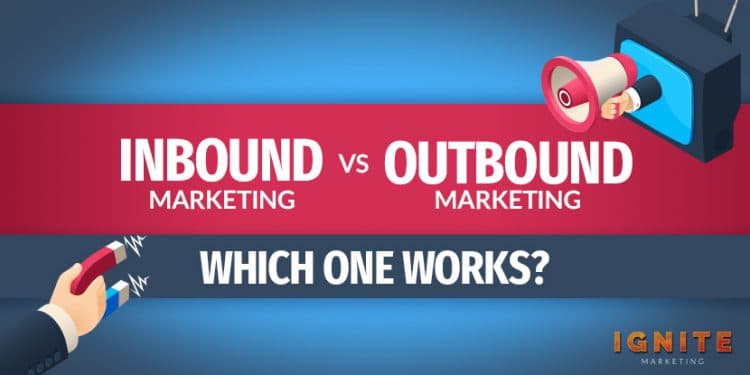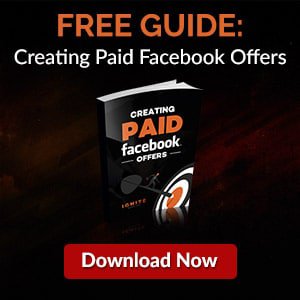


If you've heard anything about marketing in the modern era, you've probably heard about two distinct types of marketing: inbound and outbound.
Each of these types has pros and cons. But which is better? Which type of marketing works?
Here's the short answer — both inbound and outbound marketing work. However, outbound marketing is only effective if used to attract prospects to (and move them along) an inbound-based sales funnel. In contrast, inbound marketing works well enough on its own and can increase sales without using any outbound strategies.
The rest of this article will explore the ins and outs of inbound and outbound marketing and explain how each can fit into your overall marketing strategy.

Marketing has changed dramatically in the past few decades.
In the old days, businesses had to interrupt customers to reach them. To generate leads, they had to forcefully insert themselves into the customer's life by running commercials during television programs or by ruining scenic driving experiences with large billboards.
Although viewed by many as annoying, this approach ‒ known as outbound marketing ‒ worked, mainly because information was scarce in the pre-internet era.
Before owning a phone-sized computer became as ubiquitous as wearing clothing, communication channels were limited.
Everyone who wanted to learn about current events or industry updates had to consume their information through the same channels as everyone else. TV, newspapers, magazines, and mail ruled the roost before computers became ubiquitous.
Unfortunately for the consumer, these channels are incredibly rigid and narrow. Anyone watching a TV program is subject to one program at a time. And they don't have a choice in the matter; either they watch the show and commercials in the linear order presented, or they turn off the TV and do something else.
In this old world of rigid communication, sellers had the upper hand. Consumers looking for a particular product or service had very little information to go on. Ads, salespeople, and word of mouth recommendations were the sole means of learning about what a business has to offer.
But the internet has changed all of that. Now, instead of a scarcity of information, there is an abundance of information. There are more than 1.5 billion websites in existence, and anyone with a computer or smartphone can access every one of those sites with a few finger taps.
The instantaneous access to this enormous trove of information has placed the consumer in control. If you want to learn about anything, you have a lifetime's worth of reading material right at your fingertips. Thanks to this wealth of information, it's never been easier to be an informed consumer.
Because consumers have access to more information, businesses are having a harder time relying solely on interruptive messages to generate qualified leads. Many consumers have become savvy enough to perform internet research before making a purchase.
As a result, businesses have had to change their customer attraction and retention strategies. Interrupting prospects with cold calls and ads aren't enough anymore. To sell to the modern, research-savvy consumer, you need a softer, more helpful approach.
This softer approach is known as inbound marketing, and it's taken the business world by storm.
Inbound marketing is the process of attracting potential customers by creating content and experiences that help them solve their problems.
Instead of blasting prospects with conversion-focused ads, businesses are building multi-faceted sales funnels designed to attract, engage, and delight consumers.
The whole point is to provide consumers with solutions to their problems. Instead of the profit-oriented mindset that outbound marketing encourages, a successful inbound marketing strategy is built to help the consumer.
Of course, the primary goal is still to drive conversions and revenue. But instead of loudly proclaiming to all who will listen that your product is the best, you attract attention by creating content designed to help with a range of relevant issues. You then position your product as a useful solution to the consumer's problems and make your sales with this more subtle and helpful approach.

One of the main issues with outbound marketing tactics is that they don't create a trust-based relationship. Consumers are automatically wary of salesy ads, calls, or emails that interrupt their day. Even if your outbound tactics manage to get a consumer into the sales funnel, that consumer is going to be more cautious than someone who was introduced to your business through your helpful content.
Inbound marketing makes selling your product or service so much easier. As long as you create genuinely helpful content, prospects will come to trust you as a source of valuable information. This trust-based relationship will make it much easier to convince consumers to make a purchase when you ask them to.
Once you set up an inbound marketing campaign, the structure and content can often bring in qualified leads for years to come. This is especially true if the content you create is evergreen and always relevant.
Because outbound marketing campaigns rely heavily on paid advertisements and the efforts of paid salespeople, they're only as effective as the size of your marketing budget.
An excellent inbound campaign will have your content ‒ and therefore, your website and brand ‒ sitting near the top of the search results and spread around various social media platforms. As your content becomes more visible, so will your brand.
And if your content is unique and helpful, your business will become known as a thought leader in your industry, which is an excellent way to build trust among members of your target market.
One of the main goals of inbound marketing is to turn your web presence into a hub of genuinely helpful information about your industry. To do this, you need content to populate your website, social media accounts, email newsletters, and other communication channels.
Here are the most common forms of content:

A lead magnet is a free offer that consumers can access by giving their contact information. The purpose of a lead magnet is to move consumers into your sales funnel so you can eventually convince them to make a purchase.
This information almost always consists of an email address, though you can also ask for their name, phone number, and any other information you think would be helpful. It's best to ask for as little information as possible, though; the more you ask a customer to give, the lower the odds they complete the signup process.
SEO, or search engine optimization, is another essential component of an inbound marketing campaign.
Businesses who engage in inbound marketing get a sizable portion of their customer base from Google searches. To ensure your website appears near the top of the search results, you need to employ proper SEO strategies.
Social media is a wonderful place to promote your brand, generate new leads, nurture existing leads, and turn existing customers into enthusiastic brand advocates.
Email marketing sort of falls under the email newsletter label mentioned earlier. However, I want to expand on the subject a bit.
Once a consumer gives you their email address, you're free to send them almost anything you want. If you want to send them useful content, go for it. If you want to pepper some conversion-focused copy in there to drive sales, that's a fine option too.
My point is that email marketing is a tool that should be used in every phase of the buyer's journey. Don't treat it as just another way to share your content ‒ get creative with it. Make yourself stand out from the mountain of other emails sitting in your audience's inboxes.

Outbound marketing is any form of marketing in which the business initiates the conversation by forcing their message in front of consumers.
Because most consumers who view outbound marketing content aren't actively looking for the product or service being advertised, a shockingly low number will turn into leads or conversions. Outbound strategies have to reach a large number of people to be effective. Getting your message in front of a broad audience can get quite costly, so outbound strategies typically need larger budgets than their inbound counterparts.
Common examples include cold calling, telemarketing, media buys (TV ads, print ads, radio/Spotify ads, etc.), and email spamming.
If your primary marketing goal is to boost brand awareness then an outbound campaign can provide a good deal of benefit.
If you've got a group of consumers nearing the end of your sales funnel, targeting them with cold calls, cold emails, or social media ads can give them the extra push needed to make a purchase.
It's also more cost-effective to target near-converts with outbound marketing strategies because your efforts will result in more sales than if you were targeting fresh prospects.
Figuring out whether your marketing efforts are generating a positive ROI is crucial. You need to know which messages and platforms are bringing in the most revenue so you can change or eliminate underperforming ads.
Outbound marketing methods like cold calls and display ads make tracking conversions a relative breeze. Cold calls are pretty straight forward (they either buy or they don't) and display advertising networks have sophisticated measurement methods to help you figure out which ads are performing well.
If you measure your metrics correctly, you'll know how well an outbound campaign is working extremely quickly. If your reach is wide enough, you can know how well it's working within 24 hours of starting.
This is a nice change of pace from inbound marketing efforts, which can take weeks or months to start showing results. If you operate at a faster pace and want instant results from your campaigns, an outbound strategy might be the way to go.

As I mentioned, outbound marketing in the present day has a hard time standing on its own. To consistently bring in conversions, it needs an inbound marketing effort to support it.
There are two areas in which outbound marketing can best supplement an inbound strategy: in the initial attraction phase, and the pre-conversion phase.
Thanks to the large and instantaneous reach of many outbound methods, it's an excellent way to provide a large number of people with a general awareness of your product or service. While most of these people won't take any concrete steps to learn more about you, your business will be top of mind whenever they do have a problem you're in a position to solve.
Outbound marketing can also push consumers near the end of your sales funnel to convert. This is best done with social media advertisements, as you can target consumers who have recently read a blog post or viewed a video that signifies they are nearing the end of the sales funnel.
Sending emails to cold prospects is a form of outbound marketing that is increasing in popularity. More than 73% of Millenials say email is their preferred method of communication. As this group of tech-savvy prospects encompasses an ever-increasing percentage of the economy, the popularity of cold email targeting will continue to increase.
If you do engage in this outbound strategy, be aware of email spam laws that affect how many people you can target with your marketing messages. Sending personalized emails to specific people is fine, but firing off generic email blasts to hundreds of people who haven't given you permission to contact them is a bad idea.
While the effectiveness of cold calling has taken a hit due to the explosion of spammy robocalls in the past few years, it is still an effective way to follow up with specific consumers. This method is best used on consumers near the end of the funnel, though it can be an excellent way to start the conversation in some instances.
Direct mail is the oldest form of outbound marketing still in use today. Ever since nations became sophisticated enough to develop postal services, marketers have been sending letters that ask people to buy stuff.
The sheer amount of junk mail people receive, coupled with the massive shift toward email communication, has lessened the effectiveness of direct mail marketing in recent years.
It still works in some industries, though. Just note that the cost of printing and sending thousands of letters can add up rather quickly.
Google receives over 63,000 searches every single second. That's over 5.4 billion searches a day. By paying for search ads, you can position your website or content at the top of the search results for whatever keywords you like.
Search ads exist in a grey area between inbound and outbound marketing. While you are paying money to position your ad in front of a viewer ‒ thereby interrupting their search experience ‒ that ad only appears when someone searches for a keyword that is relevant to your ad.
While you could technically categorize search ads as either type, it doesn't really matter which category you throw it in. It's an effective way to drive traffic to your website, which is essential for generating conversions.
While paid search ads exist in an inbound/outbound grey area, social media ads are clearly in the outbound pile. And of all the outbound ad types, these are the most cost-effective options available.
For starters, social media platforms have incredibly low ad minimums compared to other advertising platforms. You can run an ad on Facebook for as little as $1.
Why such a low cost? Well, social media ads allow you to pay per view or click. Depending on your industry and the quality of your ad, you can pay anywhere from $0.05 to several dollars per click or view.
This is in sharp contrast to less flexible platforms like TV channels that force you to pay to show your commercial to every viewer watching the show you're advertising on.
To add to this, the superb microtargeting capabilities of social media platforms allow you to show your ad to people who perfectly fit your target demographic. You can also use these platforms to effectively engage in remarketing, which means targeting consumers who have already viewed a particular ad or piece of content.
Here are some of the most popular social media advertising options:
Trade shows offer a smaller, more personal opportunity than the mass-targeting options previously mentioned. These shows are an excellent opportunity for B2B marketing. So, if you typically sell to businesses, check for trade shows in your area.

There is one fundamental difference between the two types of marketing.
A successful inbound marketing strategy relies on useful content, while a successful outbound marketing strategy relies on persuasive messaging.
Here’s the truth: both forms of marketing work. Although inbound marketing has taken the industry by storm, there are still companies out there running successful outbound marketing campaigns.
There is an important distinction I want to make a note of, though. A marketing strategy that relies solely on inbound methods can be wonderfully effective in the modern era. However, a strategy that relies exclusively on outbound marketing will have a harder time succeeding.
Outbound marketing can be used to attract prospects into an inbound sales funnel. As it's
However, you shouldn't expect to get many sales from an outbound strategy alone. Relying entirely on outbound marketing to bring in conversions is like shooting fish in the ocean unless you really have things dialed in. Ultimately, it may not work, and you'll spend a ton of time and energy obtaining the few conversions you do get.
Inbound marketing is more effective than outbound marketing in most circumstances.
Creating genuinely helpful content and getting that content to consumers through organic search, social media, and other communication channels is what most consumers want companies to be doing.
Almost nobody wants to be interrupted by an ad anymore ‒ and with the rise of anti-ad technology like pop-up blockers, caller ID, and email spam filtering, it's harder than ever to get unsolicited messages through to your target market.
Because people prioritize companies who make helpful content over companies who spam them with conversion-oriented ads, inbound marketing is the direction most businesses should be heading in.
